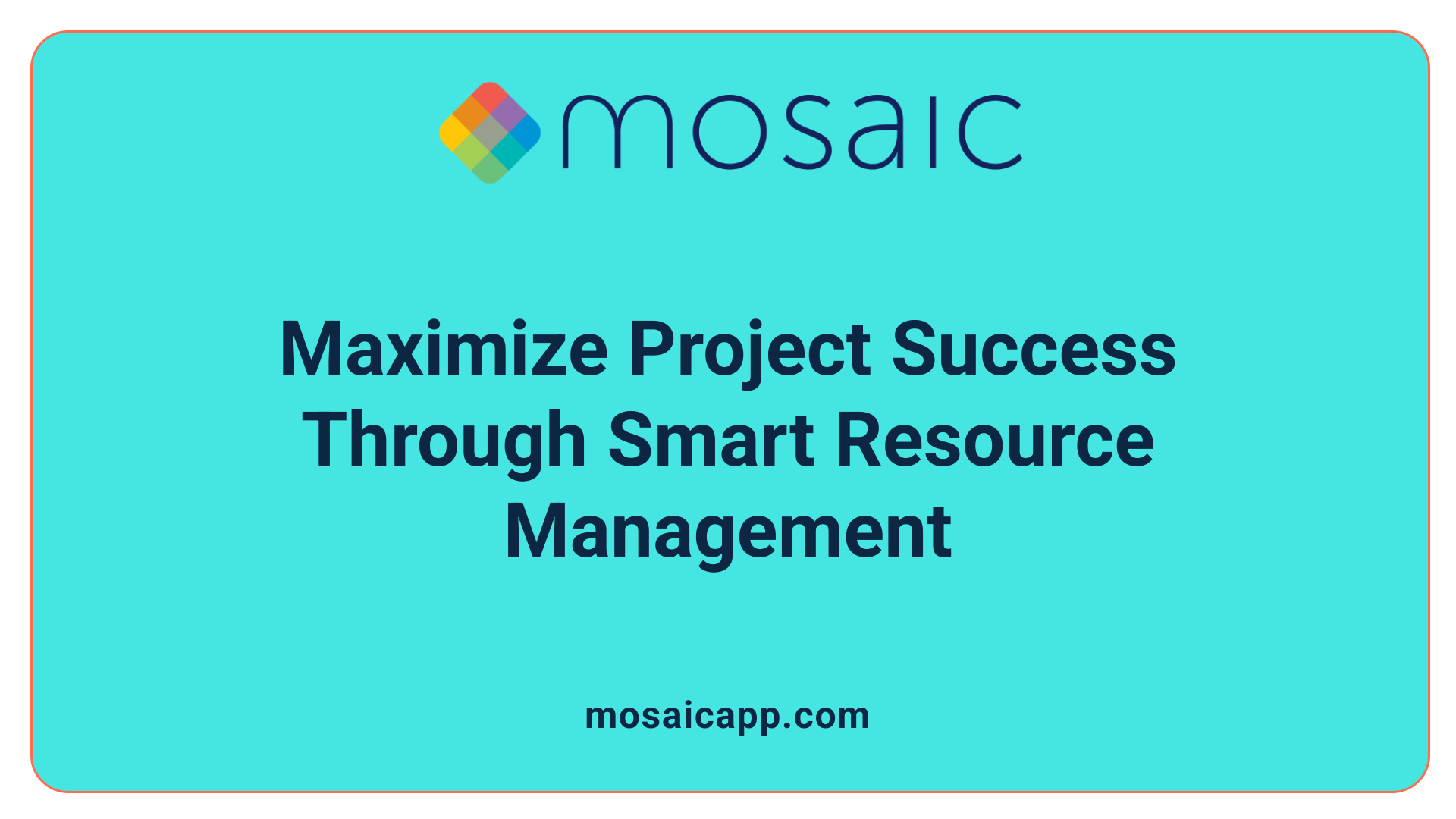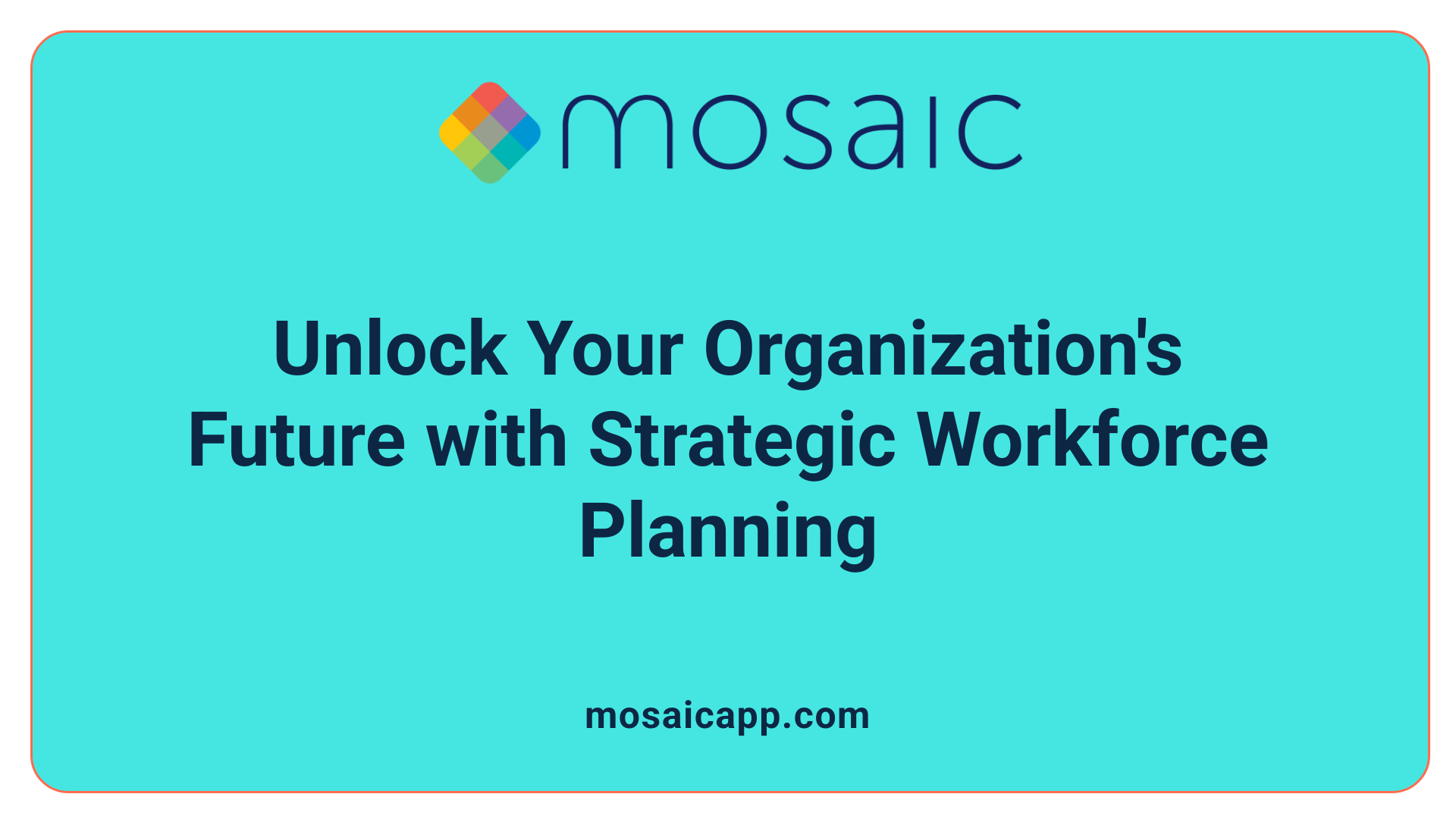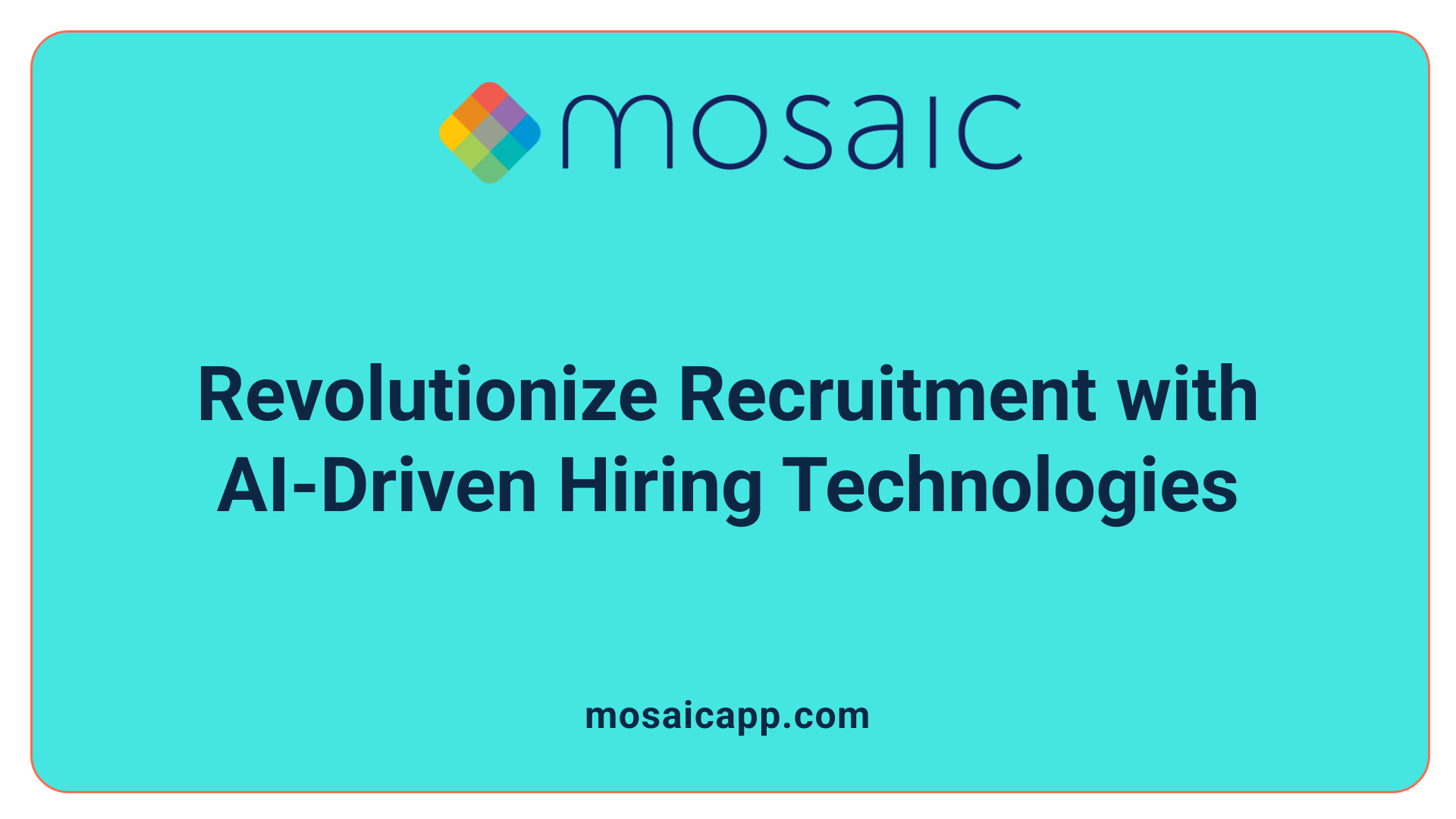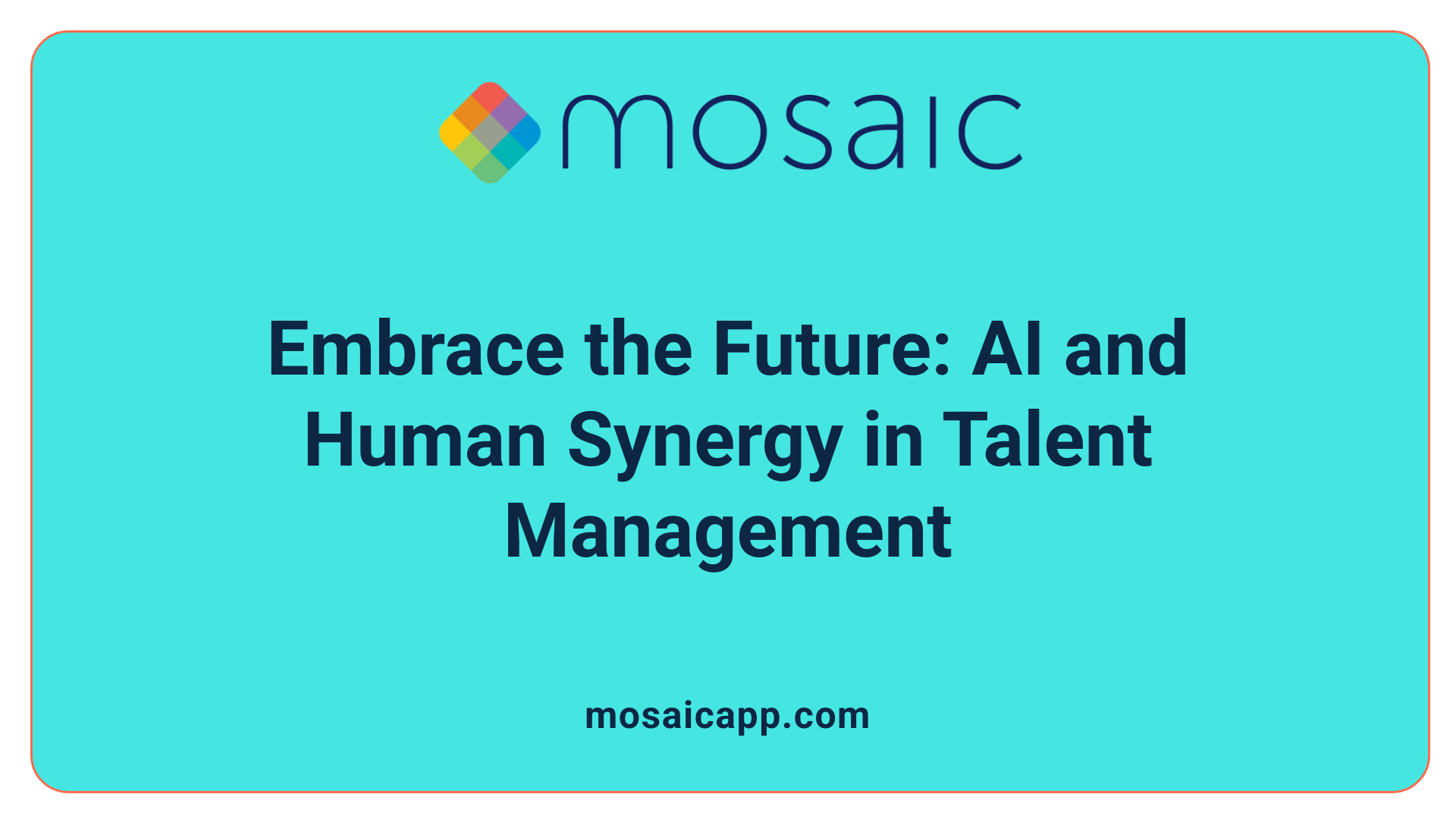The Digital Revolution in Workforce Planning
As businesses face increasing complexity in project demands and workforce needs, AI-driven resource planning is transforming hiring and staffing decisions. Integrating strategic workforce planning with AI technologies enables organizations to anticipate skills requirements, optimize resource allocation, and enhance agility. This article explores how AI-powered resource planning tools revolutionize project management, recruitment, and talent development, ensuring companies remain competitive in an era of rapid technological change.
Key Components of Project Management Resource Planning Services
What are the key aspects of project management resource planning services?
Project management resource planning centers on accurately forecasting the resources needed to complete a project efficiently. This includes personnel, equipment, and budget allocations that are crucial to meeting project goals on schedule and within financial limits.
A comprehensive resource plan incorporates skill sets, availability, and location of team members to avoid over-commitment or mismatches that could delay progress. Additionally, equipment needs and budget forecasts are carefully aligned to the project's scope.
Real-time monitoring tools, enhanced by AI and analytics, play a significant role. They provide dashboards that alert managers to shortages, excesses, or changes in project demands, enabling rapid and informed decision-making.
Adjustments can be made proactively, ensuring resources are deployed where they are most effective and keeping the project on track. Integration with organizational goals is essential, helping ensure resource use supports broader business objectives and strategic priorities.
Incorporating personnel, equipment, and budgets
- Personnel: Assessing skills and availability to match tasks
- Equipment: Scheduling and allocation to meet project phases
- Budgets: Forecasting costs aligned to resource needs and timelines
Real-time monitoring and adjustments
- Use of analytics and AI-powered dashboards to track resource consumption
- Early identification of risks and resource bottlenecks
- Dynamic resource reallocation to maintain project momentum
Skill and availability considerations
- Matching team skillsets with project requirements
- Considering geographic and temporal availability to optimize resource deployment
Alignment with organizational goals
- Ensuring resource plans reflect company strategies
- Prioritizing resource allocation based on business impact
Employing these elements in resource planning services drives project success through strategic foresight, flexibility, and smart resource management.
Benefits of Resource Management in Project Planning for Businesses
How can businesses benefit from resource management in project planning?
Effective resource management in project planning is crucial for aligning resources with project needs, ensuring that the right personnel, technology, and finances are available at the right time. This alignment significantly boosts efficiency by reducing idle time and eliminating resource shortages.
Businesses see direct cost reductions as resource planning helps avoid overstaffing and the high costs of last-minute hiring or equipment rentals. Moreover, early identification of resource conflicts allows project managers to resolve issues before they escalate, leading to smoother workflows.
Optimized scheduling and utilization of resources ensure that each asset is used to its fullest potential without causing burnout or bottlenecks. Resource management also supports strategic business objectives by aligning talent and technologies with broader company goals, thus driving project success and sustainable growth.
Overall, integrating resource management practices enhances project execution by fostering better communication, risk mitigation, and stakeholder satisfaction, enabling businesses to achieve higher project success rates.
AI-Powered Tools and Techniques Enhancing Project Resource Planning

What tools and techniques are commonly used in project resource planning?
Effective project resource planning relies on several established tools and techniques to optimize the allocation and utilization of resources.
Resource allocation charts and Gantt charts are foundational for visualizing project schedules and resource assignments. They provide clear timelines and highlight when and where resources are needed, enabling managers to balance workloads effectively.
Additionally, resource management software platforms like Float, monday.com, and Wrike have become invaluable. These tools offer real-time insights into team availability and utilization, allowing project leads to monitor workloads, avoid bottlenecks, and adjust allocations promptly.
Capacity planning and demand forecasting techniques are fundamental in predicting resource needs over time. These help prevent overallocation and underutilization by leveling resource usage across project phases.
The integration of AI-driven scenario planning marks a significant advancement. By simulating multiple scenarios, AI tools can predict future staffing requirements and suggest dynamic adjustments to project plans based on changing conditions. This supports increased agility, allowing organizations to rapidly redeploy resources as priorities shift.
Overall, combining these traditional and AI-enhanced tools strengthens strategic alignment between workforce capabilities and project objectives, driving efficiency and successful project delivery.
Challenges in Resource Management During Project Planning and AI’s Mitigation Role
What challenges are often encountered in resource management during project planning?
Resource management in projects frequently faces issues such as overallocation of resources, which leads to burnout and decreased productivity among team members. Unexpected absences can disrupt carefully planned schedules, creating bottlenecks and delays.
Forecasting resource availability and demand is another major challenge, often resulting in either resource shortages or surpluses that hurt project efficiency. Additionally, unclear definitions of resource requirements contribute to misallocation and wasted efforts.
Adapting quickly to changing project needs or emerging risks is critical but difficult, with rigid plans unable to respond effectively to dynamic circumstances.
How can AI and real-time tools address these challenges?
Integrating AI-driven real-time data and communication platforms provides organizations with up-to-date insights into workforce capacity, skill sets, and project demands. These tools help forecast resource needs more accurately by analyzing multiple variables including productivity levels and potential disruptions.
AI-powered systems can alert managers to early signs of resource overallocation or bottlenecks, enabling timely reallocation and preventing burnout. They also support flexible workforce deployment by matching skills dynamically to evolving project requirements, thus maintaining agility.
Enhanced communication tools improve coordination among HR, operations, and finance teams, ensuring resource plans align with strategic objectives. By providing transparent dashboards and scenario-based forecasting, these technologies facilitate proactive decision-making and optimized resource use.
In essence, AI and agile digital platforms transform resource management from reactive firefighting into a strategic, data-informed process that boosts both employee well-being and project success.
Impact of Effective Resource Management on Project Outcomes

How does effective resource management impact project outcomes?
Effective resource management is essential for ensuring the timely and efficient use of various resources such as human labor, materials, finances, and technologies. When resources are allocated properly and scheduled strategically, organizations can not only meet their project goals but also maintain high quality standards throughout the project lifecycle.
A significant benefit of resource management lies in its ability to prevent conflicts and bottlenecks. By providing clear visibility into resource availability and workloads, it helps reduce delays and avoid disruptions that might otherwise hamper project progress. This structured approach minimizes risks such as scope creep and uncontrolled cost overruns.
From a financial perspective, controlling costs is closely linked to how resources are managed. Efficient use of resources helps keep projects within budget and reduces waste. At the same time, maintaining high quality depends on having the right personnel and tools available when needed, preventing last-minute compromises.
Advanced management software plays a pivotal role by offering real-time insights and analytics, which enable project managers to make informed decisions. These tools facilitate better planning, allow for dynamic reallocation of resources in response to emerging issues, and enhance overall project agility. Organizations that adopt these proactive resource planning and auditing practices typically experience higher success rates and improved stakeholder satisfaction.
In summary, effective resource management is a cornerstone of successful project execution, contributing significantly to controlling costs, boosting productivity, and ensuring projects are delivered on time and within specifications.
Strategic Workforce Planning: Aligning Talent with Business Objectives

What is Strategic Workforce Planning and Its Forecasting Horizon?
Strategic Workforce Planning (SWP) is a forward-looking approach that helps organizations forecast their workforce needs over a three-to-five-year horizon. This time frame allows companies to anticipate shifts in talent demand and prepare effectively, ensuring that the right skills and resources align with future business challenges.
How Does SWP Link Talent with Strategic Business Objectives?
SWP tightly connects workforce capabilities with organizational goals. By analyzing data-backed insights, companies can identify where upskilling and reskilling are needed, directly supporting strategic priorities. This linkage ensures that talent investments contribute to operational success rather than functioning as isolated HR activities.
In What Ways Is SWP Integrated with Finance and Operations?
Modern organizations frequently embed SWP within their finance departments to synchronize talent strategies with overall business finances. This integration supports dynamic resource allocation by connecting human resource plans with operational and financial goals. Such alignment allows for agile budgeting and strategic decision-making around talent development and deployment.
How Does SWP Enhance Organizational Agility?
SWP promotes agility by enabling rapid redeployment of workforce resources, moving away from traditional hire–fire cycles. Instead of reacting to immediate needs, organizations use SWP to sustain capacity through continuous adjustments in staffing and skills management. This flexibility improves responsiveness to market changes and technology impacts, fostering sustainable growth and resilience.
AI’s Role in Enhancing Strategic Workforce Planning and Talent Management
How Is AI Used to Forecast Skill Needs in Workforce Planning?
AI significantly enhances strategic workforce planning by predicting future skills requirements with high accuracy. Organizations employ AI algorithms to analyze current employee capabilities, market trends, and emerging technologies to anticipate the skills they will need over a three-to-five-year horizon. For example, AI-powered digital tools track certifications, identify knowledge gaps, and forecast demand for both human and digital labor, ensuring that workforce capabilities align with strategic business goals.
What Is Scenario-Based Talent Gap Analysis?
Scenario-based talent gap analysis utilizes AI-driven simulations to explore various future workforce scenarios. By factoring in external market data, automation rates, and technology adoption like generative AI, companies can identify critical talent shortages and surpluses under different assumptions. This analysis helps prioritize investments in upskilling, reskilling, or recruiting. For instance, a telecom firm remapped competencies for 5G deployment and shifted its focus toward internal talent development based on such insights.
How Are Digital Workers Integrated with Human Labor?
AI agents and digital workers are increasingly integrated into the workforce, complementing human employees. This blend requires strategic workforce planning to manage and balance both types of labor effectively. AI digital workers can assist in real-time staffing decisions, project management, and reallocating resources dynamically. Organizations take into account budget, timing, and labor market conditions when deciding the optimal mix of AI-powered digital labor and human talent.
What Are the Cost Savings from Strategic Workforce Planning?
Strategic workforce planning empowered by AI can lead to substantial cost efficiencies—organizations report saving around 10% of their annual labor budgets. AI optimizes talent allocation, reduces recruitment times, and automates routine HR tasks like resume screening and candidate communication. Additionally, AI-driven tools enhance agility by enabling rapid redeployment of workforce resources, moving away from traditional costly hire–fire cycles.
| Aspect | AI Application | Business Impact |
|---|---|---|
| Skill Forecasting | Predicting future skills demand | Improved alignment with strategy |
| Talent Gap Analysis | Scenario-based simulations | Better talent investment decisions |
| Workforce Composition | Balancing human and AI digital workers | Increased operational flexibility |
| Cost Efficiency | Automating HR tasks and optimizing recruitment | Reduced labor costs (~10% savings) |
AI’s role in strategic workforce planning is transforming how organizations approach talent management, making it data-driven, agile, and aligned with future-proof business objectives.
Generative AI and Automation Impact on Workforce Skills and Staffing
How Much Work Will Automation Replace by 2030?
Up to 30% of current work hours are projected to be automated by 2030. This significant shift affects employment structures and task assignments across various industries, reshaping how organizations manage their human resources.
Why Is Workforce Capability Uncertainty Increasing?
The rise of generative artificial intelligence (Gen AI) introduces unprecedented uncertainty about workforce skills and capabilities. As AI tools evolve rapidly, companies face challenges in forecasting which skills will be most valuable, complicating traditional talent management strategies.
How Are Organizations Shifting Their Talent Strategies?
In response to these changes, many organizations are moving focus from recruiting externally to upskilling and reskilling existing employees. For example, a telecommunications firm preparing for 5G deployment prioritized developing internal talent through training programs rather than hiring new specialists.
How Is AI Enhancing Recruitment Processes?
AI-driven applicant tracking systems are increasingly used to match existing talent profiles with open positions. Currently, 43% of organizations employ AI in their HR functions, using it to generate job descriptions, screen resumes, automate candidate searches, and communicate with applicants. These technologies reduce vacancy filling times and increase recruitment flexibility, enabling organizations to adapt quickly to shifting talent needs.
This integration of AI and upskilling efforts supports a dynamic approach to workforce planning, helping businesses stay agile amid technological disruption.
AI Applications Transforming Recruitment and Hiring Processes

How is AI used in job description generation?
AI enhances recruitment by automatically generating accurate and engaging job descriptions. According to recent stats, 66% of organizations utilize AI to craft job descriptions, ensuring clarity and consistency that attract the best candidates while saving HR teams significant time.
How does AI improve resume screening and candidate search?
AI-driven tools streamline the resume screening process, helping recruiters quickly identify top talent. About 44% of companies use AI for resume review, and 32% deploy automated candidate search functions that scan vast applicant pools efficiently. Additionally, some use generative AI applicant tracking systems to match retained profiles with new roles, reducing vacancy-filling times and boosting recruitment flexibility.
In what ways does AI assist with targeted job postings and applicant communication?
Targeted job postings are optimized by AI in 31% of organizations to reach the most relevant talent segments. AI also facilitates applicant communication by automating messages and updates, with 29% of companies applying these tools to maintain engagement and timely responses during hiring.
What are the efficiency and time-saving benefits of AI in recruitment?
More than half (51%) of organizations using AI in hiring report substantial time savings, with 89% specifically highlighting increased efficiency. Automation reduces manual administrative tasks, allowing HR professionals to focus on strategic decision-making and candidate experience, ultimately accelerating the hiring cycle.
Addressing the Skills Gap and Employee Development with AI
How Does AI Enable Personalized Learning Recommendations?
AI technologies in HR are increasingly used to recommend personalized learning opportunities. About 47% of organizations using AI in HR leverage it to tailor employee development paths, ensuring training aligns with individual skill gaps and career goals. This personalization enhances learning effectiveness and keeps employees engaged by focusing on skills most relevant to their roles and evolving industry demands.
How Is Learning Progress Tracked with AI?
Tracking learning progress is another significant benefit of AI in workforce development. Around 38% of companies employing AI in HR use it to monitor employees' training completion and skill acquisition. This real-time tracking helps managers and HR teams adjust learning plans promptly, providing targeted support where needed and ensuring that upskilling initiatives deliver tangible results.
What is the Role of Upskilling in Preparing Employees to Work Alongside AI?
Despite the rise of AI, approximately 67% of organizations report a lack of proactive employee upskilling to collaborate effectively with AI systems. Addressing this gap is crucial since AI adoption transforms job requirements and demands new capabilities. Upskilling enables employees to complement AI, fostering a hybrid workforce where human judgment and machine efficiency coexist.
How Are Continuous Learning Cultures Built?
To optimize AI benefits and sustain workforce agility, organizations are advised to cultivate cultures of continuous learning. This involves establishing training programs, developing governance frameworks, and encouraging employees to develop new skills constantly. Emphasizing ongoing development helps mitigate the risks of skill obsolescence and drives long-term human capital resilience in a rapidly changing technological landscape.
Organizational and Managerial Implications of AI in HR and Resource Planning
Change management and leadership alignment
The integration of AI in HR and resource planning necessitates robust change management and strong leadership alignment. Organizations must anticipate structural and cultural shifts that AI adoption brings, ensuring leaders at all levels, especially CEOs and CFOs, understand and support AI-driven productivity and cost-efficiency goals. This alignment helps smooth transitions and prepares the workforce for evolving operational models.
HR role transformation
AI is poised to transform HR functions drastically. With automation potentially covering 50-75% of traditional HR tasks such as recruiting, onboarding, and performance management, HR professionals' roles are shifting from transactional support to strategic consultancy. This transition calls for re-engineering work processes and redesigning HR activities to emphasize advisory and strategic planning over routine operations, helping HR avoid downsizing and an 'identity crisis.'
Governance frameworks and ethical use
Organizations are advised to develop governance frameworks to manage AI implementation responsibly. Ethical concerns around data use, bias, and transparency require structured policies. Moreover, fostering a culture of continuous learning and establishing clear guidelines ensures that AI supports rather than replaces human judgment, maintaining candidate experience and decision quality.
Preparing HR for AI integration
Successful AI integration demands technological maturity and proactive workforce preparation. Training HR teams to collaborate effectively with AI, developing skills to manage digital and human talent, and cultivating adaptability are critical. Forward-looking HR professionals should lead proactive redesigns of HR operations, embedding AI tools thoughtfully instead of passively awaiting vendor solutions. This preparation strengthens HR’s role in strategic workforce planning and sustainable organizational development.
Future Trends: Integrating AI and Human Expertise for Sustainable Talent Management

Balancing AI Automation with Human Judgment
As AI increasingly automates HR tasks—ranging from recruiting and training to onboarding and performance management—organizations face the challenge of balancing machine efficiency with human insight. While AI can handle up to 75% of transactional HR work, human judgment remains essential for strategic decisions and maintaining a positive candidate and employee experience. Maintaining this balance ensures that technology enhances rather than replaces the nuanced skill set of HR professionals.
Digital Workers in Workforce Planning
The integration of AI-powered digital workers, such as AI agents, is transforming strategic workforce planning by blending digital and human labor. These agents assist in real-time staffing decisions, managing certifications, forecasting skill needs, and reallocating resources efficiently during projects. Incorporating digital workers into workforce planning allows organizations to leverage external market data and better anticipate talent gaps, ultimately supporting cost savings and agility.
Industry 4.0 HR Digitalization
Industry 4.0 technologies, including AI and the Internet of Things (IoT), are accelerating HR digitalization, enhancing precision, efficiency, and workplace safety. This transformation requires a reevaluation of HR capabilities and functions, fostering adaptability and sustainable development. HR’s evolving role involves embracing new technologies to support employee well-being and augment decision-making with data-driven insights.
Strategic Preparation and Capacity Building
Successful AI integration in HR demands more than technology deployment—it hinges on strategic preparation, leadership alignment, and capacity building. Organizations must invest in training, governance frameworks, and cultivating a culture of continuous learning to optimize AI’s benefits. Proactive redesign of HR processes positions organizations to adapt swiftly to shifting labor market conditions and harness AI’s potential as a strategic partner in talent management.
Strategic Integration of AI Enables Smarter Staffing Decisions
AI-powered resource planning is reshaping how organizations manage talent and project resources, offering unprecedented precision and agility. By integrating AI with strategic workforce planning, companies can forecast skill demands, optimize hiring, and enhance employee development to meet evolving project and business objectives. While challenges exist, particularly in adapting HR functions and closing skills gaps, the strategic use of AI tools combined with human expertise fosters sustainable talent management and improved project outcomes. Embracing this hybrid approach prepares organizations to thrive amid technological and market disruptions, underscoring AI's vital role in future workforce and resource management.
References
- Strategic workforce planning in the age of gen AI
- The Role of AI in HR Continues to Expand
- A study of Artificial Intelligence impacts on Human ...
- Rethinking Strategic Workforce Planning with AI Agents
- The End of HR As We Know It? AI Is Starting To Change ...
- Top 10 common resource management mistakes you must ...
- 10 Resource Management Challenges [+ Practical Solutions]
- How Project Resource Management Can Boost Your ...

